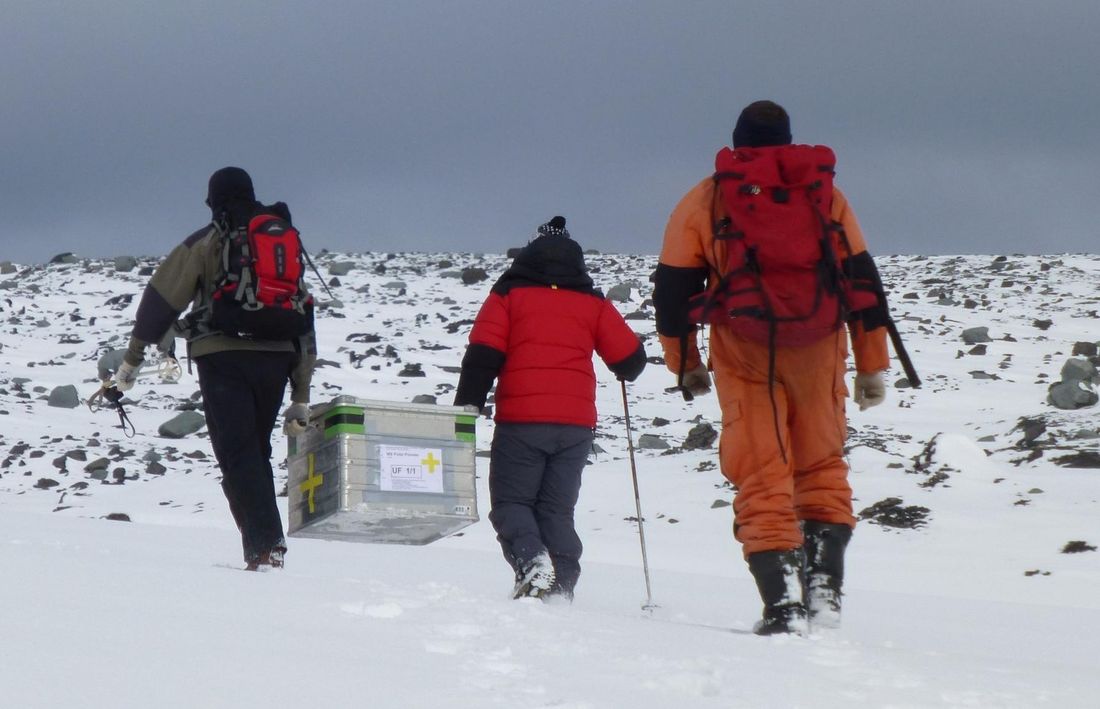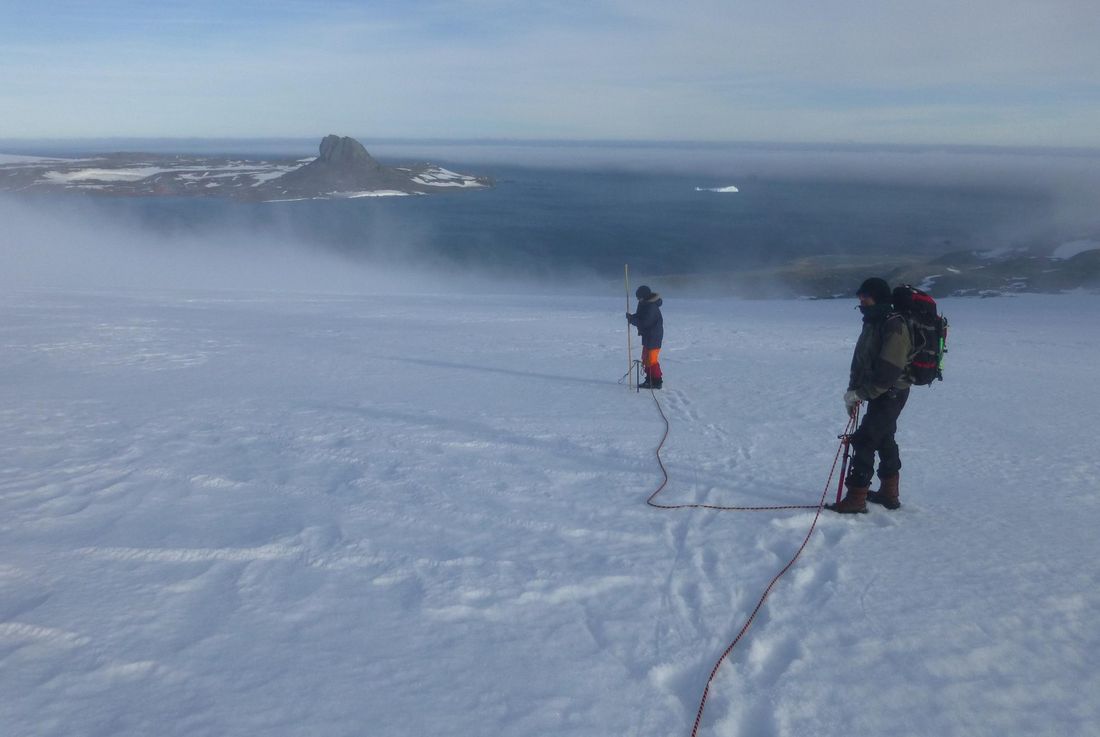Closing the bag: Hernan Sala and colleagues from Germany and Argentina are finalizing work on Fourcade glacier
We are close to finishing our joint glaciological research project in Carlini Station. These years have been very exciting and plenty of nice and interesting work and personal experiences. A lot of companions and colleagues from many different institutions from Argentina and Germany have been involved in these activities, directly or not, including scientists from IAA, DNA, AWI, ZFL, EA, FAU, INA, etc. (sorry for the many acronyms!). All our work would have been impossible without their valuable help.
At the very beginning of our project was in spring 2010, in this season Ulrike Falk (ZFL) and Matthias Braun (FAU) installed an automated weather station, different electronic data loggers and two transects of mass balance stakes on the Fourcade Glacier surface. From this starting point a lot of work was performed at Carlini and on the surrounding glaciers. But the work has not been undertaken only by us (let's say the "glaciological core team"). At least, five overwintering scientists (“el Colo”, Damián, “Juansito”, Facu and Pablo) have conducted a large amount of tasks. They have worked all year round: helping in summer with the installing of glacier mass balance stakes and electronics devices, and along the rest of the year, measuring and maintaining the installments in the field and in Carlini Station and the Dallmann Laboratory. Many mechanics from the Carlini Station staffs have helped us dozens of times over the years repairing the snow mobiles, and carrying and bringing several tons of heavy batteries, pipes, wood and metal poles, sledges, gas bottles, ropes, tool boxes and so to and from the glacier measuring station.
The glaciological field work performed in Antarctica, along with the data processing and discussion in Bonn, Erlangen and Buenos Aires have been extremely fruitful and informative for me, and also to several German and Argentinean colleagues that have worked with us (Hilke, Adrián, Tobi and Pablo). In my own experience, and surely in their experience as well, all these collaborative work has been profoundly productive.
Our field tasks during the austral summer seasons involved the installation and maintenance of the automated weather station, several thermo-recorders, three pluvio-nivometers, tens of mass balance stakes, many high precision GPS surveys, etc. While operating all these measurements, we practiced and improved our experience in mountain security. From the beginning we already knew that activities on glaciers must be performed using all measures and safety devices. Many of the people who worked with us had no previous experience in glaciers or mountaineering, but all acted in an extremely responsible and collaborative way.
As a result of these field activities a large number of glaciological and meteorological data sets have been gathered. Part of these data is already published, another part is still in the process of publication. Most data have been archived and are freely available via the AWI PANGAEA database.
I hope that having participated in this project has been as relevant for everyone as it has been for me. My special thanks to Liliana Quartino (IAA), Doris Abele and Dirk Mengedoht (both at AWI) for their permanent support along this years.
Hernán Sala
Instituto Antártico Argentino – Dirección Nacional del Antártico


